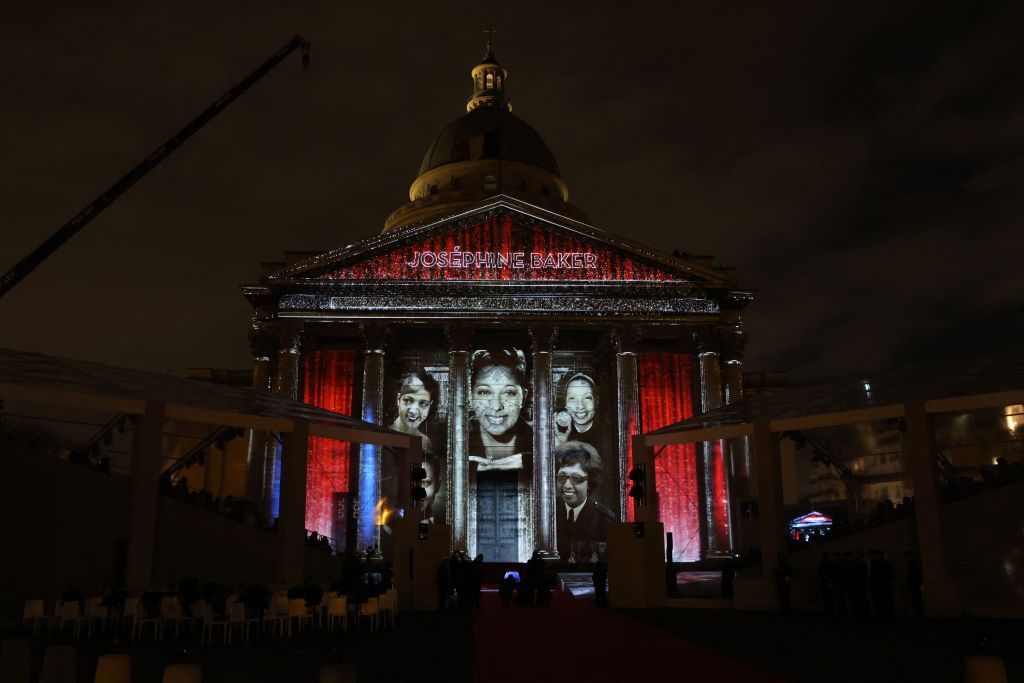
- Industry
Josephine Baker: The American Star and French Heroine Is Inducted Into the Panthéon
Forty-six years after her death, Josephine Baker was inducted into the Panthéon on Tuesday to join France’s heroes. In a moving ceremony attended by iconic figures, she was honored for her life as an artist, resistance fighter and anti-racial activist.
On November 30, 2021, Baker made history by becoming the first Black woman to claim her place in what is known as “the secular temple of the Republic”. It is a fitting resting place for this humbly-born child of segregationist America who became both a music hall star and a defender of Free France during the Nazi occupation of the nation.
Born Freda Josephine McDonald on June 3, 1906, in Saint Louis, Missouri, the entertainer, who became the embodiment of Parisian frivolity as a performer, also demonstrated a core of steel in her private life as a resistance fighter during the Second World War.
For Baker, American by birth, and adoptive mother of twelve children from nine different nationalities, the Elysée has stated that her induction into the Panthéon is appropriate because she embodied “the French spirit.”
“In artistic terms, I have been a great admirer of Josephine Baker since my grandmother introduced me to her music hall shows, but that is obviously not the reason for her entry into the Panthéon,” says President Emmanuel Macron. “My decision was made because Josephine Baker had served France in WWII as a liaison officer and air force officer. That she had also served France through her work with LICRA, the International League against Racism and Anti-Semitism, and even outside France, working with Martin Luther King for civil rights, and also for peace in Vietnam, peace between Israel and neighboring countries… for all these reasons, but particularly because today, with our social problems, she embodies an example of integration and above all an example of republican values.”
In front of more than 2000 guests, including many children attending schools that bear the name of the artist, and backed by the music of a moving and brilliant choir, the cenotaph of Josephine Baker, carried by six soldiers of l’Armée de l’Air – the French Army Air and Space Force – was placed in vault number 13, alongside the writer and soldier of the First World War Maurice Genevoix, who was placed in the Panthéon in November 2020.
It was not Baker’s actual coffin that made its entry into the Pantheon, but a cenotaph, a coffin without remains. Her children had wanted their mother’s body to remain in the Monaco-Louis II cemetery where she is buried, alongside her husband, her son Moses and Princess Grace of Monaco, who supported her in her last years.
“She remains in Monaco where she is buried in the marine cemetery – it is a family decision which respects the wishes of our mother,” said Jean-Claude Bouillon-Baker, one of the artist’s children. “This cenotaph is filled with four samples of soil, gathered in Monaco, in Paris, in the castle of Milandes in the Dordogne where she lived for 20 years, and in Saint Louis, in the United States, her birthplace.”
In the morning, the Minister of Transport, Jean-Baptiste Djebbari, had unveiled the new name of the Parisian Métro station Gaîté, which will now be called Gaîté-Joséphine Baker; President Emmanuel Macron then used the afternoon’s ceremony to recall the courage of the American immigrant, who received French nationality in 1937.
“France distinguishes through her destiny an exceptional personality, born American, but having chosen, in the name of the fight she waged all her life for freedom and emancipation, Eternal France of Universal Light,” the Elysée has added.
Visibly moved, members of the family of the artist were present and did not hide their emotions. “We are obviously very proud,” explains Brian Bouillon Baker, adopted son of Josephine Baker. “I think my mother would have been surprised at first and then probably have protested out of modesty. She would have said that many other personalities would have deserved to enter the Pantheon at the same time as or even before her, but she would have been very moved and very proud, just as she was when she received her military medals, the cross of resistance Croix de Lorraine, Knight of the Legion of Honor and the Croix de Guerre. “
President Macron describes the artist as an “impressive, modern and inspiring woman;” she also now rightly takes her place among those who are also buried in this French monument, as an “immortal.”